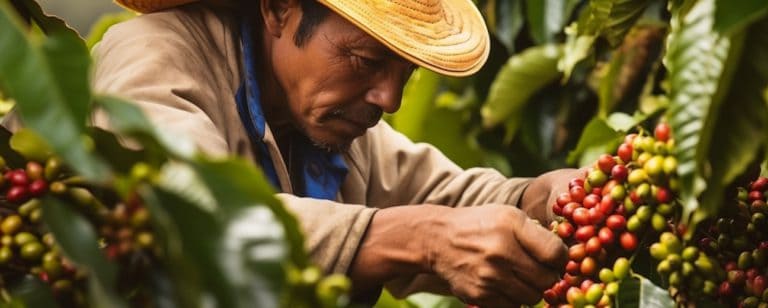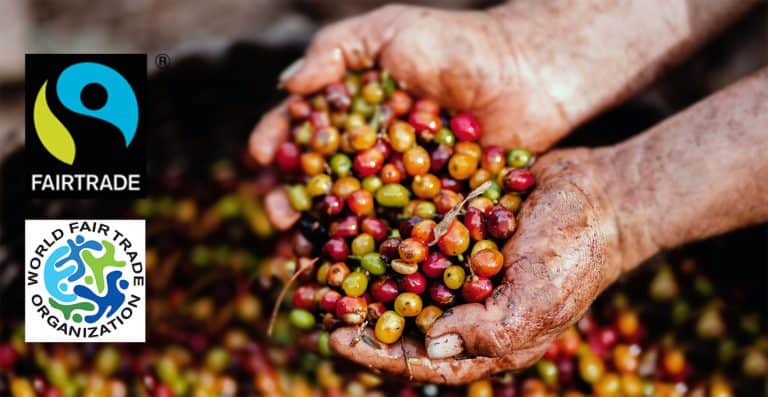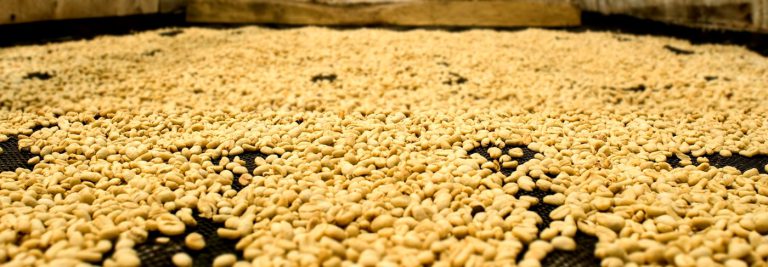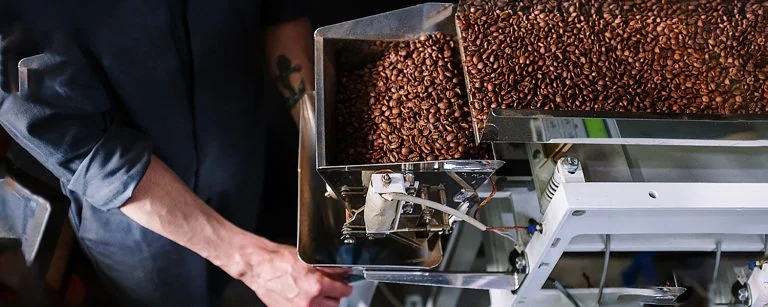The 4 Types of Coffee Roasts Compared (Taste, Aroma, Brewing Differences)
Did you know that coffee beans acquire their characteristic flavor only after roasting?
Before roasting, coffee beans are green and taste like grass. Only after reaching one of the four types of coffee roasts will they look, smell, and taste like the coffee beans you are used to.
Before I explain the difference between coffee roast levels, I want you to know what coffee roasting does.
Coffee roasting is the process of heating green coffee beans in a roaster until they turn darker in color, inducing several physical and chemical reactions that bring out their flavor and aroma. The method, duration, and temperature of the roasting process determine the type of coffee roast in the end.
4 Main Types of Coffee Roasts
There are four primary levels of coffee roasts, as differentiated by the National Coffee Association.
Light Roast – Fruity aromas
The roasted aromas remain in the background with light roast coffee. The origin flavors are more pronounced, and the characteristics of the particular green coffee dominate the taste profile. Fruity aromas and pleasant acids are more prominent in the taste of lighter roasts.
Internal temperature: 180°C – 205°C | 356°F – 401°F (at the first crack)
Taste: acidic, with fruity, lemony notes
Other names for light roasts: Light City, Half City, Cinnamon
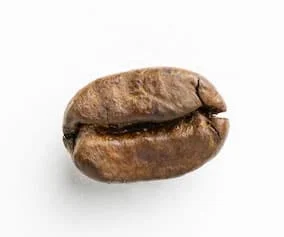
Light roast coffees are in the roasting drum for a short time, more specifically until shortly after the “first crack” of the coffee bean at around 196°C. In some cases, the roast cycle is stopped even while audible cracks still occur.
Immediately after the first crack, the light coffee roast still has a lot of moisture and a smooth surface. Characteristic features are the particularly pronounced acidity and distinct fruity aromas, with sweetness still underdeveloped. Overall, their flavor is light, with an earthy, grainy flavor.
The beans are light brown in color.
Light roasted coffees by specialty roasters are becoming increasingly popular with Third Wave and Specialty Coffee. Like wine, however, appreciating light-roasted coffee requires a lot of practice.
In fact, most people that have only had dark roasted espressos or filtered coffee will find a light roast espresso awful, sour, and just not right.
Here are my favorite light roast coffee beans.
Medium roast – Best of both worlds
The medium coffee roast combines the best of all worlds, as the acidity, roasted aromas, and the bean’s origin flavor are very well balanced in a not too strong, slightly sweet brew with a wide variety of flavors.
Internal temperature: 210°C – 220°C | 410°F – 428°F (right before the second crack)
Taste: full-bodied, balanced flavor, bit tarty, subtle acidity with berry and fruit flavors, caramel
Other names for medium roasts: City, American, Breakfast

Medium roast beans do not reach the “second crack”, and they no longer have an earthy, grainy flavor but come with the typical tart coffee aroma. Coffee connoisseurs refer to a “full body” as a round taste experience. The caramelization of the bean has already begun, but small levels of acidity still remain.
This is referred to as a “balanced” taste profile.
There are different levels of medium coffee roasts, each of which can have more or less acidity and flavors, such as chocolate, citrus, and berries of varying intensity.
Medium roasts are popular in many parts of the world. Specialty medium roast coffee is a good “starter” before plunging into light roasts.
Medium-dark roast
Medium-dark roast beans are roasted a few minutes longer than medium, till the second crack. This roast level has a bittersweet tang to it, paired with a spicy, heavy body. Hints of smokiness become evident but not as strong as dark roasts.
Internal temperature: 225°C – 230°C | 437°F – 446°F (at the second crack)
Taste: slight acidity, caramel, chocolate, spicy, emerging smokiness
Other names for medium-dark roasts: Full City, Light Espresso, Vienna
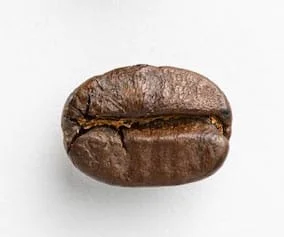
Medium-dark roasts are rare. Usually, roasters go for a medium, or a dark roast. A medium-dark roast is right in between the two, in that it is heavier than medium, but not as strong as dark roasts. There is more caramelization, but not overdone. Acidity is very weak at this roast level.
Oils already start showing on the beans, which have a satin-brown appearance.
Dark roast – Intense and heavy
Dark coffee roasts are a collective term for dark brown to black coffee beans. Here, chocolaty and smoky aromas dominate with a very distinctive bitter note, which comes from the increasing caramelization during the firing process. The acidity, on the other hand, is relatively low.
Internal temperature: 240°C – 250°C | 464°F – 482°F (past the second crack)
Taste: strong, slightly bitter, smoky, chocolate
Other names for dark roasts: Continental, New Orleans, European, Espresso, Spanish, Italian, French
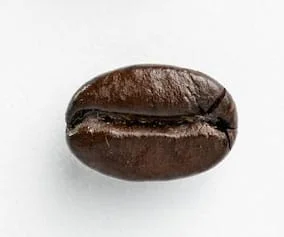
Dark roast beans are in the roaster until the coffee beans crack the second time. This “second crack” signifies that the beans have lost a lot of water and are slowly beginning to burn. With darker coffee roasts, however, this delicate “coking” is a good thing, as it brings out unique flavors from the beans.
The darker a coffee is roasted, the less you can taste the quality or flavors of the green coffee.
Darker roast coffee beans are glossy and have an oily surface because they release oils through the long and intensive roasting processes.
Dark roasts are especially popular in Southern Europe with the traditional Italian espresso. Here are my favorite dark roast beans as well.
Most of the coffee beans you find in a supermarket can be assigned to this roast grade. However, supermarket dark roasts are created using quick hot air roasting at 600°C. These supermarket coffees are basically burnt on the outside, but not on the inside, suitable for making strong coffee, but not much else.
What are those 16 extra coffee roast levels?
Many fantasy roast names have emerged within the 4 main coffee roast levels (like French roast, Fully city roast, Vienna roast, Breakfast roast, etc.)
Each one stands for a given roast stage within the larger groups of light to dark roasts.
I’ve listed them under each major roast type, but you need to know that these are not exact. What one roaster calls “full city” will be slightly different from another.
What are the differences between light, medium, and dark roast coffee?
Here is a comparison table of the differences between coffee roast levels.
| Light roast | Medium roast | Dark roast | |
|---|---|---|---|
| Roast temperature | 180°C – 205°C (356°F – 401°F) | 210°C – 220°C (410°F – 428°F) | 240°C – 250°C (464°F – 482°F) |
| Taste | acidic, with fruity, lemony notes | balanced flavor, bit tarty, subtle acidity with berry and fruit flavors, caramel | strong, slightly bitter, smoky, chocolate |
| Caffeine | same | same | same |
| A.K.A. | Light City, Half City, Cinnamon | City, American, Breakfast | Continental, New Orleans, European, Espresso, Spanish, Italian, French |
What actually happens during the coffee roasting process?
When you roast coffee, you are basically dry heating + stirring raw beans.
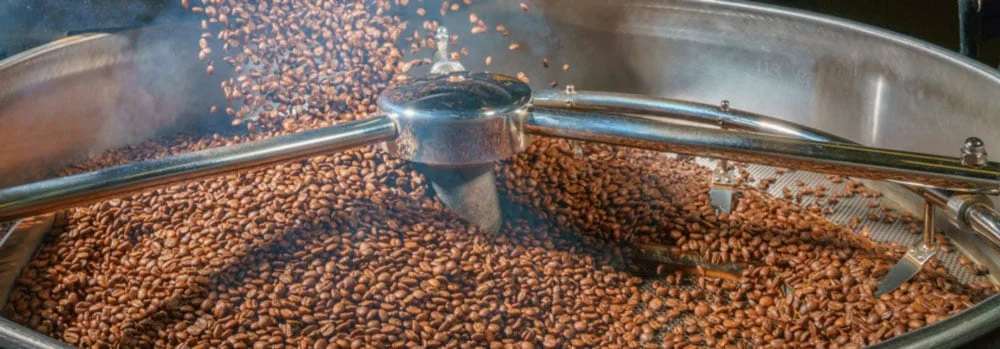
Here is a quick rundown:
- The heat causes the coffee beans to lose water and thus weight.
- Slowly, the temperature rises. This is called the heat curve.
- At the same time, the volume of each bean increases due to the formation of water vapor.
- From around 120°C, the Maillard reaction starts gathering momentum.
- The sugar contained in the beans caramelizes at about 160°C- 190°C.
- Various aromas develop between 165°C and 210°C, and the combination of sugars such as glucose and lactose with amino acids results in the development of new flavors.
Small batch roasting takes a lot of experience, so an experienced coffee roaster must control the roasting process: roast time, heat curve, and cooling of the beans.
If you are interested in the specifics of how roasting works, here is a detailed article on the topic.
FAQ
Light roast coffee brews a mellow and smooth flavor. The best coffee beans for this type of roast are 100% Arabica.
The strongest coffee roast is Espresso roast. Espresso roasts are generally dark in color, highly aromatic, and taste of coffee with a bitter edge.
Medium roast coffee provides the most exciting tasting experience. It brews full-bodied cups of coffee with flavor notes from lighter and darker roasts.
All roast levels have about the same caffeine content. There is a misconception that dark roast coffees have less caffeine than lighter roasts. This is not true!
No. Coffee has been proven to be healthy when consumed in moderation. In fact, dark roast is said to be slightly healthier than light roast.
Yes, but home roasting isn’t simple. You need to constantly stir the beans that jump at the cracks, monitoring their temperature and ensuring they are leveled out in the pan.
Generally, light roasted beans are more suitable for drip and immersion brewing, while dark roast coffee beans are better for espresso. However, specialty coffee is changing this, as it also uses light roasts for espressos.



